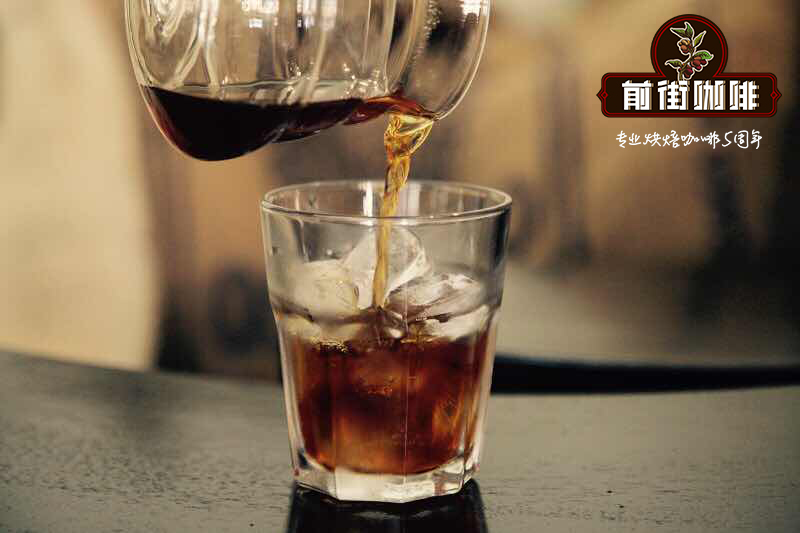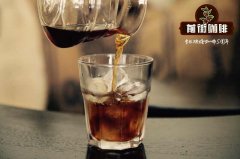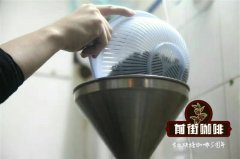What are SOE coffee beans? What is the standard of a good Espresso extraction? Characteristic stories of SOE

Professional coffee knowledge exchange more coffee bean information please follow the coffee workshop (Wechat official account cafe_style)
To put it simply, a single espresso (Single Origin Espresso) is an espresso brewed with beans from a single producing area / manor. this kind of coffee has the characteristics and flavor of the producing area, and compared with the Italian concentrate brewed by the formula beans (Blends) from more than two producing areas, the balance, alcohol thickness, coffee oil and so on are usually insufficient, but it also has a strong personality. It is one of the best ways to explore the flavor of a certain coffee bean, and it is also my personal favorite drink.
It seems quite simple to say, as if simply replacing the formula beans with coffee beans from a single producing area, but in practice we have to face a lot of challenges and difficulties. If you overcome these obstacles, you will have the opportunity to taste a cup of espresso with rich layers and charming flavor. on the contrary, without proper adjustment of brewing parameters and flavor, it is easy to drink a cup of coffee that may have a variety of defective flavors. the common defective flavors of single espresso are: acidity, saltiness, bitterness, astringency, dry tongue and so on. Unlike the inherent balance advantage of formula beans (and therefore a large range of extraction errors), the disadvantages of single product concentration are very obvious and easy to be magnified and inspected. Providing single product concentration in business is a very challenging task for shopkeepers. In addition to the huge consumption of ripe coffee beans during testing, the external environment (temperature, humidity) is changing every day. Whether the stability of the quality between each cup of coffee can be maintained is the difficulty. For shops that require quality, it is common to concentrate and discard the cup.
In terms of extraction, because the roasting degree of single coffee is usually shallow, and its flavor is more slender, elegant and layered than that of formula beans, the range of "ideal extraction parameters" is very narrow. a slight channel effect, changes in temperature or pressure, uneven extraction, or even a drop of 2 to 3 grams of actual liquid weight may make a huge change in flavor. In my experience of extraction, I have tasted the concentration of a single product with a difference of 2g in liquid weight between two cups. Under the condition that the other factors are almost the same, it is only because the extraction is less than 2-3 seconds, resulting in a salty feeling and an excessively acerbic flavor.
Flavor adjustment and testing depend on the complete control of other man-made factors, that is to say, the uniformity of the cloth powder, the size and balance of the pressure channel must be kept consistent as far as possible. Only in this way can we test the effects of grinding fineness, water temperature and pressure on the flavor of coffee. A good cup of espresso is not easy to come by, and it takes time to make and often has extraction problems. If you have a chance to drink this kind of coffee, you should give more encouragement to the barista who brews this cup on the back of the coffee machine. I believe he / she must have spent a lot of time and effort on such a drink.
Expresso extraction standard
Italian concentrated extraction judgment plays an important role in a coffee shop that pays attention to coffee quality, because Italian concentrated coffee is not brewed by hand, French filter pot, or siphon (siphon kettle). After brewing, you can take a sip to confirm the flavor and quality of the coffee, but it is the base of most coffee consumers' favorite drinks (such as latte, cappuccino, etc.). In order to drink a cup of cappuccino with excellent flavor, in addition to the correct milk, near-perfect semantic concentration is also indispensable, so Italian concentrated extraction depends on other reliable information to help baristas make judgments.
The traditional judgment rules are as follows: 8-10 atmospheric pressure, 7 g coffee powder, 86-90 ℃ water temperature, 25 ±2.5 ml single espresso extracted in 20-30 seconds, or 50 ±5 ml double espresso extracted with 14 g coffee powder at the same time and pressure, usually using the double shunt filter handle (double portafilter), which is common in most cafes. As long as the coffee obtained meets the above range, it is considered to be a cup of normally extracted espresso.
Later, the American Fine Coffee Association (Specialty Coffee Association of America, referred to as SCAA) had a slightly different interpretation of espresso: extracting a single espresso of 45 ml at 9-10 atmospheric pressure, 7-9 g of coffee powder, 88-92 ℃ of water temperature, and 22-28 seconds. However, in practice, it will be found that such data are only for reference, because there is a big gap between the roasting degree of coffee and the understanding of coffee flavor in the past decade. In the past, deep-roasted formula concentrate dominated the market, and espresso with an emphasis on nutty and cocoa flavor was very popular. If the water temperature is too high, the bitter flavor will be extracted, which is slightly different from the 93-94 ℃ used in today's light and light roasted coffee. In addition to the rapid development of coffee machine manufacturing technology in recent years, coffee machines with variable pressure and pressure curve (pressure profiling) have been invented, and the brewing pressure is no longer a fixed 9 atmospheric pressure, whether it is the introduction of prepreg pressure (pre-infusion) or mid-stage slow drop pressure extraction (gentle ramp out of pressure). All kinds of pressure curves that exceed the old rules have been tested and tested one after another. Even the same coffee bean has different flavor spectrum under different pressure curves.
During the third wave of the Coffee Revolution, coffee people who advocated science-based extraction not only narrowed the reasonable scope of normal extraction, but also added a lot of criteria that could help judge whether it was good or bad. it was considered that in general, Italian concentrated extraction should use 18 g coffee powder, obtain a liquid weight of about 30 g, water temperature 92-94 ℃, and extraction time 25-27 seconds. It can be noted that coffee can be judged from the volume of coffee liquid to a more accurate actual weight of coffee liquid. This is because coffee is affected by various factors, such as brewing pressure, roasting depth, freshness, and so on. Judging by volume, coffee fat (crema) is very unreliable. The water temperature also rose to 92-94 ℃ due to the shallower roasting of the third wave of coffee. In addition, the invention of the bottomless handle (bottomless portafilter) also allows baristas to observe the extraction of coffee throughout the process. If there are problems such as uneven extraction (uneven extraction), channel effect (channeling), and early whitening (blonde gusher), they can quickly remake a cup of coffee before serving it to the guests.
Important Notice :
前街咖啡 FrontStreet Coffee has moved to new addredd:
FrontStreet Coffee Address: 315,Donghua East Road,GuangZhou
Tel:020 38364473
- Prev

Extraction of Espresso
Professional coffee knowledge exchange more coffee bean information please pay attention to the coffee workshop (Wechat official account cafe_style) over-extraction (Over-extraction) must first understand the concept of extraction rate, according to VST Coffee Refractometer (coffee refractometer, the official designated measuring instrument for a number of coffee international events), reasonable coffee extraction rate (ex)
- Next

This paper introduces the principle and flavor of American drip filter coffee machine, which is composed of mainframe and its extraction method.
Professional coffee knowledge exchange more coffee bean information Please pay attention to the coffee workshop (Wechat official account cafe_style) the components of the American coffee machine usually the American type coffee machine is composed of mainframe (including water tank, inlet pipe, outlet pipe, insulation tray, temperature control device, heating pipe, etc.), power cord, glass pot, filter basket, filter screen, insulation plate, control switch and water level scale
Related
- What is the Philharmonic pressure? How to use Philharmonic pressure to make delicious coffee
- Why does a hand grinder have more fine powder than an electric grinder?
- In addition to the hot mom, what is the difference between the versions of EK43 | ditting and Mahdi ek43?
- What kind of equipment do you need to make coffee by hand? Introduction to novice starter cooking equipment tools
- Espresso needs to be ground how thick and thin scale entry Italian Coffee Machine Bean Grinder investigation and Grinding course
- How much does it cost to open a small private cafe? How much does it cost to learn coffee? How to operate it?
- The difference between the flavor characteristics of hand-brewed coffee and coffee maker is hand-brewed coffee really better than coffee maker? Can I use a coffee machine to make coffee beans by hand?
- The difference between 01 and 02 of hario v60 filter cup what is the difference between 01 and 02 filter cup opening and cooking flavor
- What's the difference between the smart cup and the French kettle? Which is better, the French kettle or the Smart Cup?
- What's the difference between a smart cup and a V60 filter cup? The difference between the taste of smart cup and hand-brewed coffee

